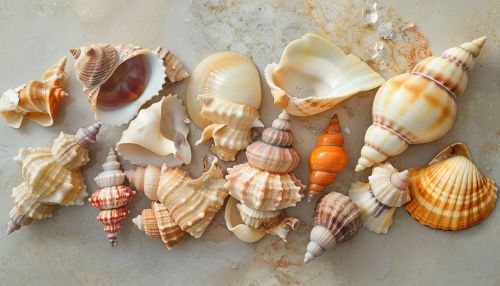Archaeomalacology
Introduction
Archaeomalacology is the study of molluscs in archaeological contexts. This branch of archaeology focuses on the analysis of molluscan remains, primarily shells, to gain insights into past human behavior, diet, and environment. The term "archaeomalacology" was coined in the late 20th century and has since become a significant field of study within archaeology.
History and Development
The study of molluscs in archaeological contexts has a long history, dating back to the 19th century. Early archaeologists recognized the potential of molluscan remains as indicators of past human activity. However, it was not until the late 20th century that the term "archaeomalacology" was coined and the field began to develop as a distinct discipline within archaeology.


Methodology
Archaeomalacologists employ a range of methods to study molluscan remains. These include taxonomic identification, taphonomic analysis, and isotopic analysis. The goal of these methods is to understand the relationship between humans and molluscs in the past, including the role of molluscs in human diet, economy, and symbolic activities.
Taxonomic Identification
The first step in any archaeomalacological study is the identification of the molluscan species present in the archaeological assemblage. This is typically done through comparison with modern reference collections and the use of identification guides.
Taphonomic Analysis
Taphonomic analysis involves the study of the processes that have affected the molluscan remains after their deposition. This can provide information on the conditions under which the molluscs lived and died, as well as the post-depositional processes that have affected the assemblage.
Isotopic Analysis
Isotopic analysis of molluscan shells can provide information on the environmental conditions under which the molluscs lived. This can include information on temperature, salinity, and diet.
Applications
Archaeomalacology has a wide range of applications in archaeology. These include the reconstruction of past environments, the study of human diet and subsistence strategies, and the investigation of symbolic and ritual uses of molluscs.
Environmental Reconstruction
Molluscs are sensitive to environmental conditions, and their shells can provide valuable information on past environments. This can help archaeologists to understand the environmental context of archaeological sites and to reconstruct past landscapes.
Diet and Subsistence
Molluscs have been an important part of human diet in many parts of the world, and the study of molluscan remains can provide valuable information on past human subsistence strategies. This can include information on the types of molluscs that were consumed, the methods used to collect and process them, and the seasonality of their consumption.
Symbolic and Ritual Uses
In addition to their practical uses, molluscs have also been used symbolically in many cultures. The study of molluscan remains can therefore provide insights into past symbolic and ritual practices.
Challenges
Despite its potential, archaeomalacology also faces a number of challenges. These include the preservation of molluscan remains, the identification of species, and the interpretation of archaeological assemblages.
Conclusion
Archaeomalacology is a valuable tool in the archaeologist's toolkit, providing insights into past human behavior, diet, and environment. Despite the challenges it faces, the field continues to develop and contribute to our understanding of the past.
